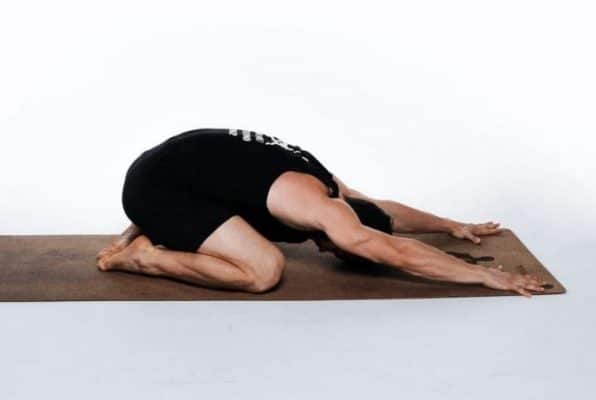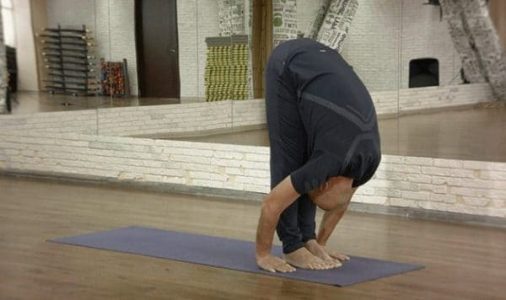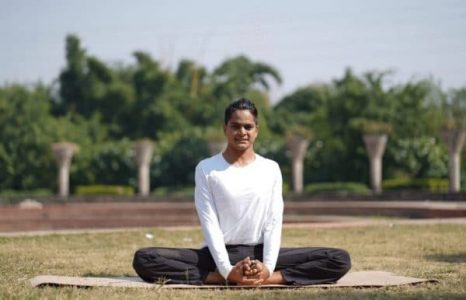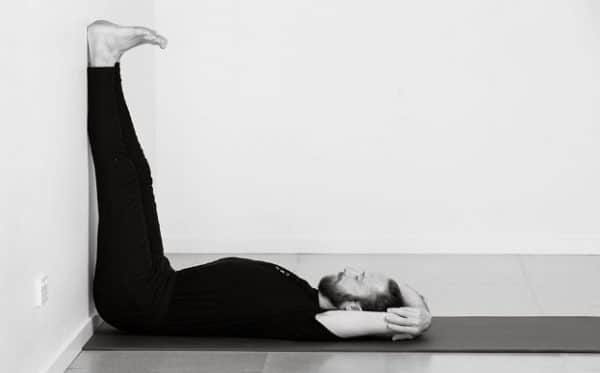Few things in life can help you relax after a hectic day, as yoga can. It helps you unwind and holistically get rid of the stress. According to a national survey, up to 90% of yoga practitioners report that it improves their sleep quality, among other benefits.
Some asanas or poses in yoga can improve the quality of your sleep in a significant way. But before we show you the asanas for a night of better sleep, here are some tips so you get the best sleep after a long day.
- The best time to practice yoga for sleep is a few minutes before bedtime.
- Incorporate Ujjayi Breath or Ocean Breath for each pose while doing yoga for better sleep. This is where you inhale and exhale through your nostrils while keeping the mouth firmly closed. In addition, you aim to constrict the back of your throat, especially during exhalation.
- Stay in one asana for five minutes. If you find this duration challenging, aim for at least three minutes for optimum results.
- Use a quality yoga mat for the practice as it will reduce the risk of injury and make you comfortable while executing the poses.
Wide-Knee Child’s Pose
Another name of the wide-knee child’s pose is balasana.
Kneel gently on a yoga mat as you bring your big toes together to touch.
Spread your knees wide as comfortably as you can and exhale as you lower your belly to the thighs.
Relax your hands at your sides, right next to your feet with palms facing up. Drop your shoulders as you widen the space between the shoulder blades and feel the tension ease away.
Your forehead lightly touches the mat. You can also roll your head gently from side to side to relax your brows.
Alternatively, you can bring your hands forward with the palms facing down.
Your breath should be slow, intentional, and steady.
Benefits of balasana
It restores stability and provides a sense of calm.
Caution
Practice balasana with caution if you have injuries in the knees or hips.
Standing Forward Bend
This pose is also known as uttanasana.
Stand tall, with your spine elongated, and keep your feet hip-width apart.
Take a deep breath and exhale as you bend forward. Your forehead should be a few inches from your knees.
You can rest your hands on the shins or hold onto the elbows. You can also rest your palms on the floor.
If you have a tight hamstring, softly bend your knees and rest your chest on your thighs. You can also make the pose easier by using blocks or some furniture to support your hands.
While coming out of uttanasana, make sure to come back very slowly to your normal position so that you do not feel light-headed.
Benefits of uttanasana
Uttanasana fully stretches your spine and relaxes the shoulders and the neck. In addition, uttanasana also stretches the calves, hamstrings, as well as hips.
Caution
Uttanasana is not recommended if you have a spine or back injury.
Reclining Bound Angle
It is also called Supta Baddha Konasana.
Lie on your back on a quality yoga mat.
Bend your knees gently and bring your heels close to your tailbone.
Bring your soles and hold them together as you allow your knees to fall away and relax. If your knees do not feel comfortable, roll a towel or place a cushion on either side of the knees. This will support the knees as well as the hips.
If you feel the tension in your hips, you can move your feet further away from the tailbone and hold them in a position where you feel most comfortable.
Place your hands on the mat above your head, with palms facing up. You can also grab your elbows if you want.
There should be a nice gentle stretch on the groin area as well as the hips. However, take note not to overwork the knees as it will add extra tension.
Benefits of Supta Baddha Konasana
This yoga pose releases the tension in the groin area and the hips.
Caution
If you have injuries on the groin area or the hips, you should practice Supta Baddha Konasana with extreme caution.
Legs Up The Wall Pose
This asana is popularly called Viparita Karani.
Place your yoga mat perpendicular to an empty wall and sit down on the mat.
Slowly edge your body towards the wall on your side and lie down as you touch the wall.
As you lie down on your back, gently swing your legs up on the wall. You can edge closer and bring your tailbone as close to the wall as possible.
Your arms should relax by your sides with palms on the floor.
If you need help, roll a towel or use a cushion to support your tailbone.
Benefits of viparita Karani
This asana relaxes your lower body, including your hips, legs, and ankles. The pose also improves circulation in the lower body and relieves swollen feet and ankles. Viparita Karani is a great pose for those who spend a good amount of time on their feet.
Corpse Pose
The other name of the Corpse Pose is Savana.
Lie down on a yoga mat, facing up and your hands at your sides with palms facing up.
Inhale deeply and slowly fold your knees as you bring them towards your chest and hug them close with your arms.
As you exhale, stretch your legs and place them on the floor away from each other, and relaxed.
Your tailbone should be grounded on the mat at all times.
Relax your lower back as you relax your arms at your sides with palms up. Drop your shoulders away from the body and relax without any tension or pain in the body.
You can use an eye mask or a piece of cloth on your eyes to keep out the light or keep them closed gently.
Benefits of the savanna
As the final resting pose in yoga, savanna relaxes your entire body. It also brings your breath to a normal pace so you can have a deep and peaceful sleep.




